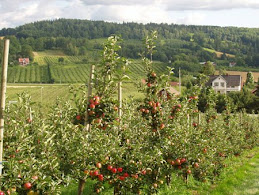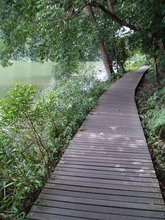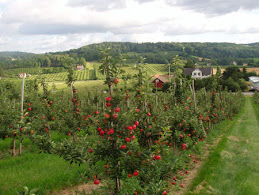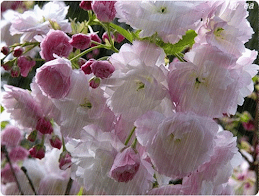
Tropical Fruits


Dragon Fruit (Pitahaya), 龙珠果 - Moisturize and smoothen skin and decrease bad cholesterol level (Vitamin B3)

Dragon Fruit (Pitahaya), 龙珠果 - Improves the immune system and promotes healing of cuts and bruises (Vitamin C)

Dragon Fruit (Pitahaya), 龙珠果 - Hylocereus costaricensis (Costa Rica Pitaya) has red-skinned fruit with red flesh
Improve memory (Carotene)

Strengthen bones and teeth development (Calcium)

Dragon Fruit (Pitaya or Pitahaya), 龙珠果/火龙果/火龍果 - Cactus Species, Genus Hylocereus (sweet pitayas)
Also known as Strawberry Pear, Nanettikafruit, Thanh Long, Cactus fruit, Night blooming Cereus, Belle of the Night, Cinderella plant.

Dragon fruit (火龍果/火龙果) at Chiyai Market

Fiber
Calcium
Iron
Phosphorus
Carotene (Vitamin A)
Riboflavin (Vitamin B2)
Niacin (Vitamin B3)
Ascorbic acid (Vitamin C)
Enhance the body metabolism (Protein)
Improve digestion (Fiber)
Reduce Fat (Fiber)
Improve memory (Carotene)
Maintain the health of the eyes (Carotene)
Strengthen bones and teeth development (Calcium)
Tissue development (Phosphorus)
Help to metabolize carbohydrates and produce energy (Vitamin B1)
Improve appetite (Vitamin B2)
Moisturize and smoothen skin and decrease bad cholesterol level (Vitamin B3)
Improves the immune system and promotes healing of cuts and bruises (Vitamin C)
Interesting Facts
The flowers of the dragon fruit plant only bloom at night and usually only live for one night. For this reason, they are often called Moonflower or Queen of the Night. Pollination happens at this time to allow the fruit to emerge.


Dragon Fruit Farm (toothfairy)

Chokchai Dragon Fruit Farm at Pakchong, Korat province in Thailand


Dragon Fruit (PITAYA) - in garden

Dragon Fruit (PITAYA) - Oceanic Thai

Than Long Green Dragon

Sweet pitayas come in three types:
a) Hylocereus undatus (Red Pitaya) has red-skinned fruit with white flesh.
b) Hylocereus costaricensis (Costa Rica Pitaya) has red-skinned fruit with red flesh
c) Hylocereus megalanthus (Yellow Pitaya) has yellow-skinned fruit with white flesh.
By Courtesy of Philips
http://infopedia.nl.sg/articles/SIP_768_2005-01-11.html










































.jpg)
.gif)
.jpg)




















































%20-%20%E5%82%B7%E5%BF%83%E7%9A%84%E8%B7%AF%20(Sh%C4%81ng%20x%C4%ABn%20de%20l%C3%B9)%20-%20The%20Road%20of%20Sorrow%20(With%20Subtitle)_11.png)


